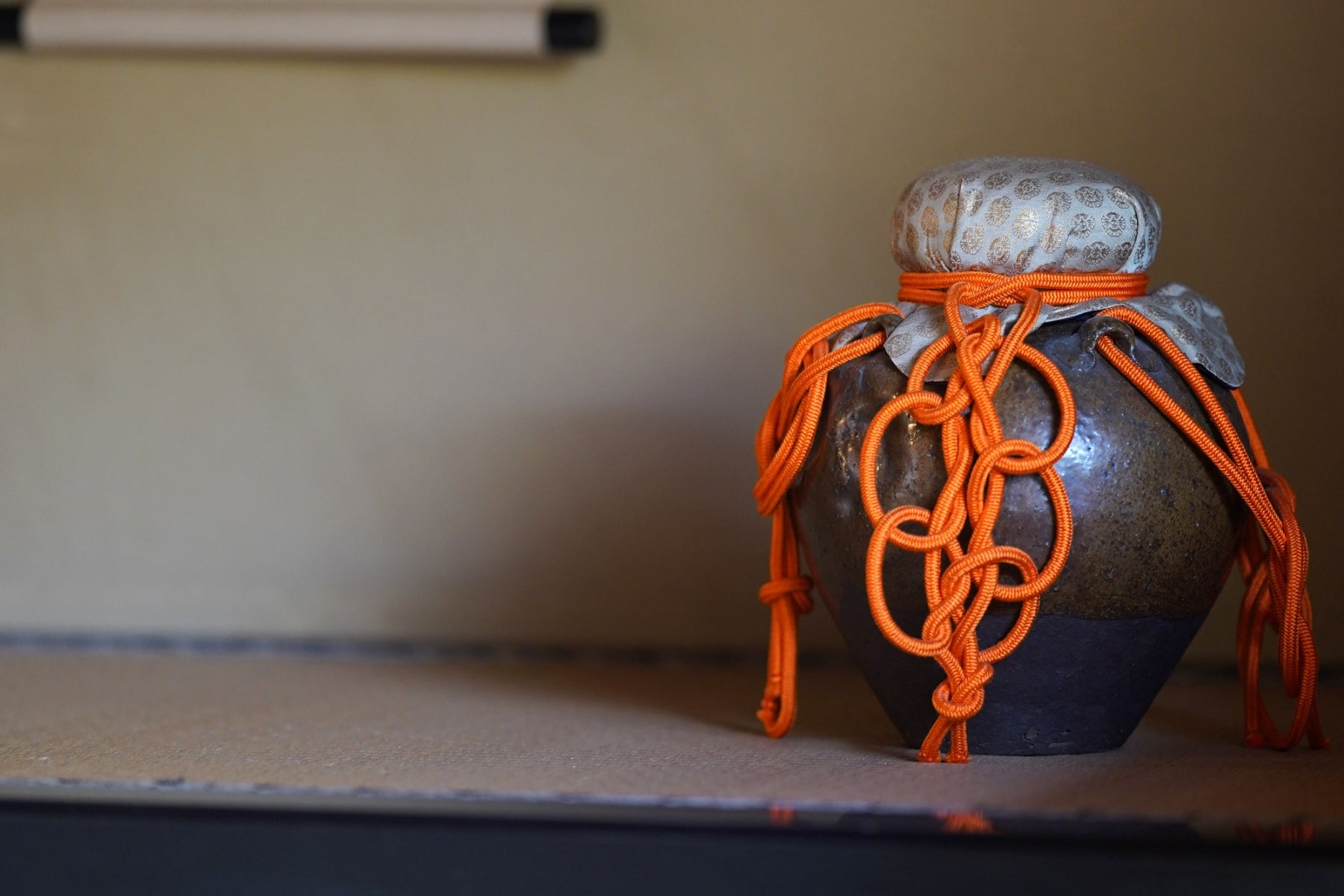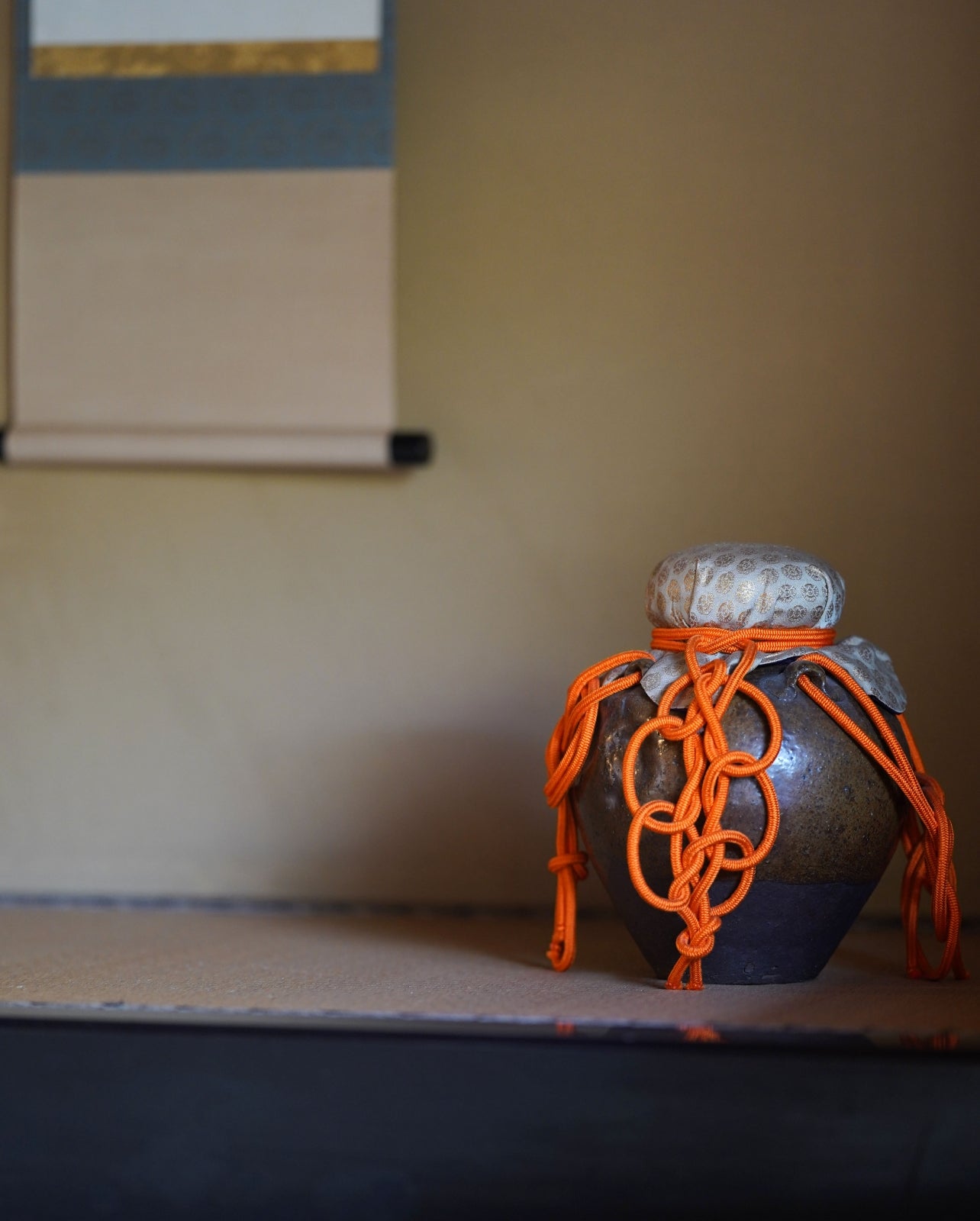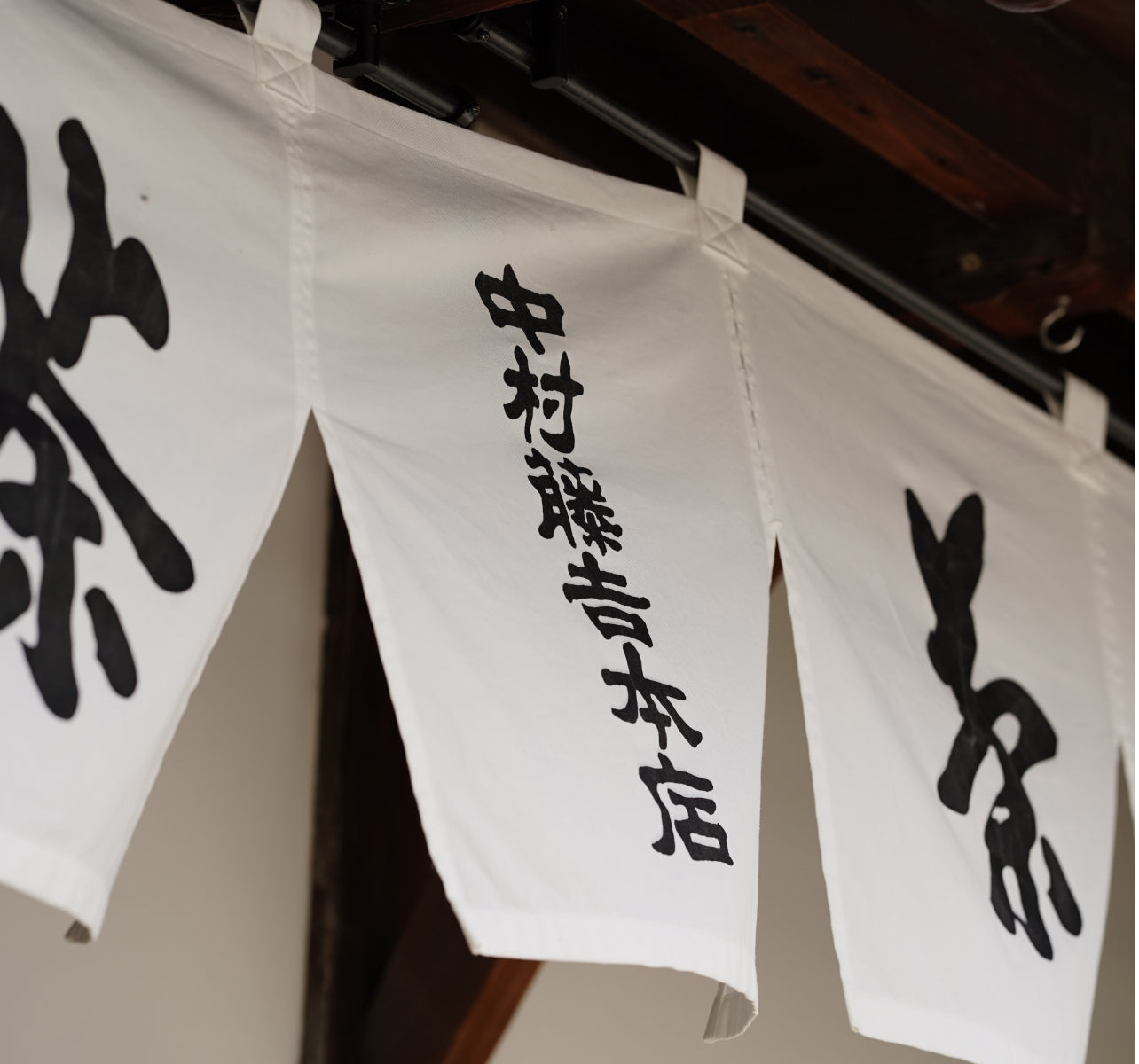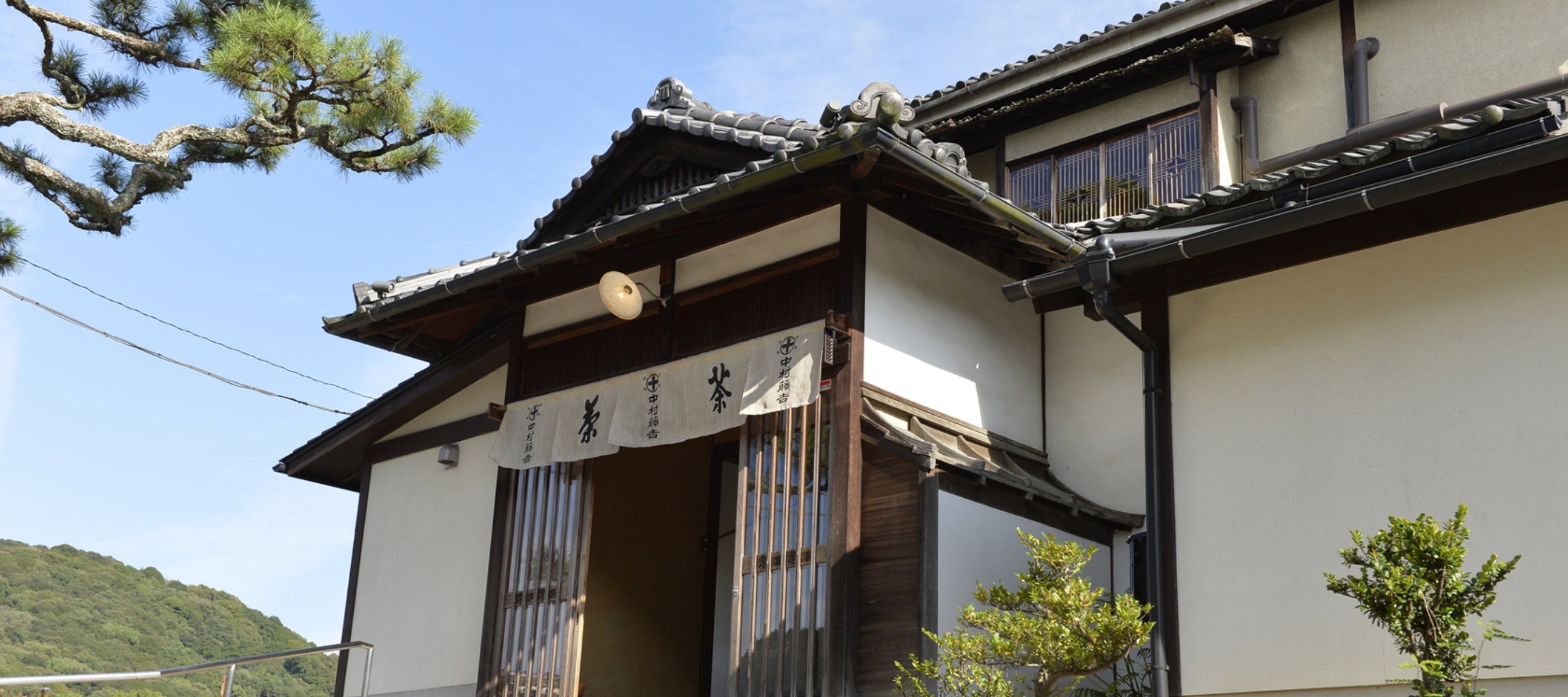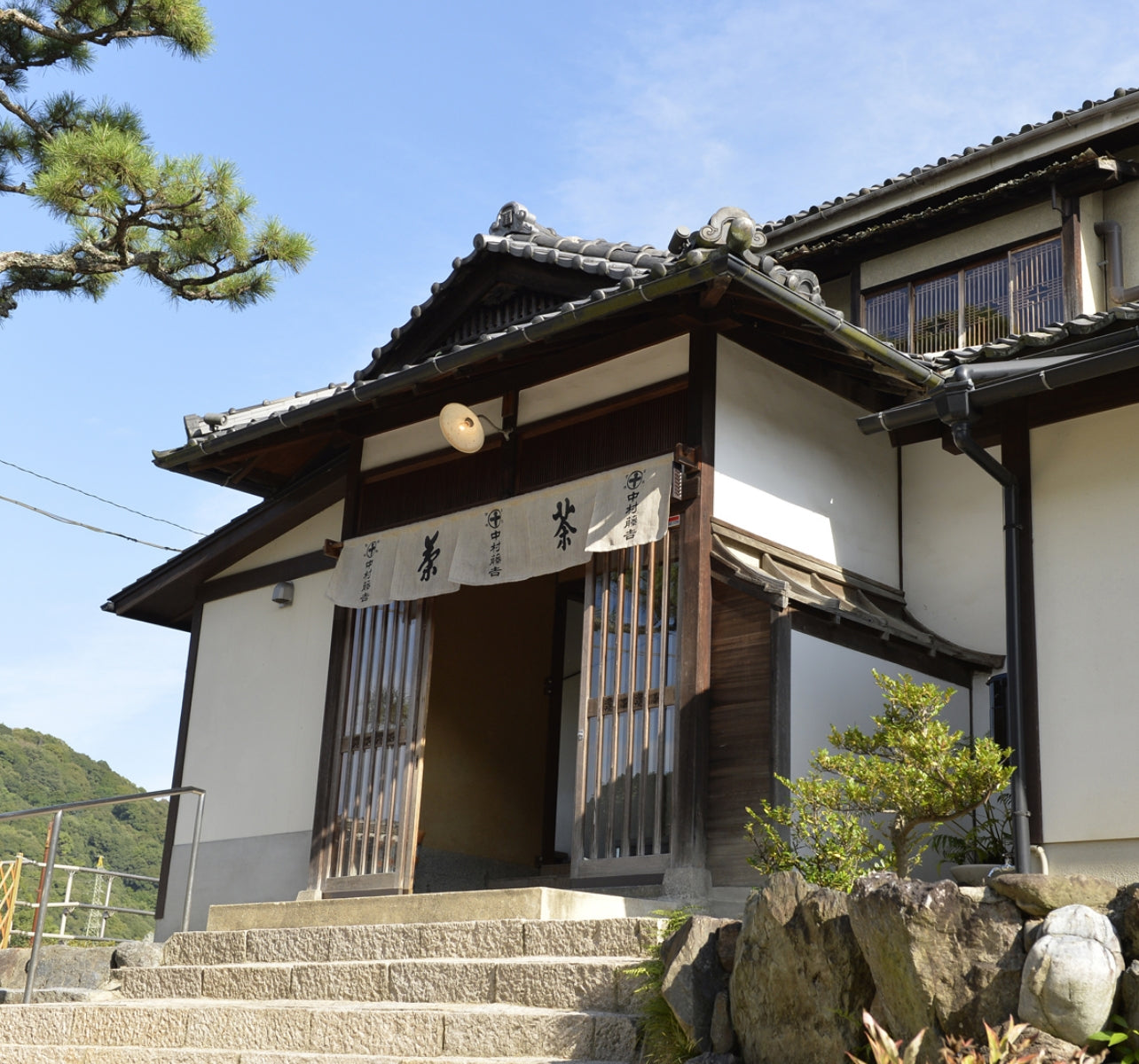Konakamura Tokichi changes his name to Nakamura Tokichi I (after calling himself as Maruya Tokichi for two years), and establishes the tea firm, ‘Nakamura Tokichi’ (trade name:  Maruto) in the premises of the current Honten (Main Store) on New Year’s Day, a day of good fortune.
Maruto) in the premises of the current Honten (Main Store) on New Year’s Day, a day of good fortune.
history of nakamura tokichi honten
Its history dates back to 1819, during the Bunsei era when the parents of the first NAKAMURA Tokichi met. The father of the first Nakamura Tokichi, Rokubei, was born as the son of Kyubei, a sheet metal worker from Fushimi. However, he was adopted at an early age by KONAKAMURA Rokuemon, a thatched-roof craftsman, and he also became a thatched-roof craftsman. In Bunsei 2, he married Tosa, the daughter of YAMAMOTO Bun'emon, a farmer from Uji Makishima. They had five children: two daughters and three sons.
The fourth child, Tokichi (the second son), later took the name Nakamura Tokichi and founded the tea business: Nakamura Tokichi.

About Nakamura Tokichi
10 Nov. 1832 (Tempo 3)
Nakamura Tokichi was born as the fourth child of father Konakamura Rokubei and mother Nakamura Tosa.Approx. 1842 (Tempo 13)
Began an apprenticeship under Hoshino Soui.Approx. 1845 (Tempo 16)
Tokichi became an assistant manager at a young age.1 Jan. 1854 (Ansei 1)
Tokichi founded the tea firm, Nakamura Tokichi.8 Jun. 1896 (Meiji 29)
Tokichi passes away.
Origin

1854Ansei 1
Establishment of Nakamura Tokichi

1870Meiji 3
Opened Yonago and Matsue branches in San'in region
 Meiji-Taisho era manufacturing scene
Meiji-Taisho era manufacturing scene

1895Meiji 28
Received numerous honorary gold, silver and bronze medals
The firm was awarded First Prize at the 4th National Industrial Fair in addition to many honorable gold, silver and bronze medals at various local fairs and exhibitions.

1912Taisho 1
Nakamura Tokichi III (Ukichi) become the Mayor of Uji Town.

1913Taisho 2
The firm succeeded in motorizing the tea grinding mill.
On November 29, the Nakamura-style tea grinding machine (the prototype of the current machine) was registered as Patent No. 25028.
 Registered patent No. 25028 Nakamura-style tea grinding machine
Registered patent No. 25028 Nakamura-style tea grinding machine

1915Taisho 4
The firm offered tea in commemoration of Emperor Taisho's enthronement ceremony.
 Taisho era packing scenery
Taisho era packing scenery

1928Showa 3
Upon the enthronement of Emperor Showa, the koicha (thick tea) "Chiyo Mukashi" was presented and graciously purchased.
 Showa Era - Scenes of harvesting tea presented to Emperor Showa
Showa Era - Scenes of harvesting tea presented to Emperor Showa
1939Showa 14
Kyoto Prefectural Tea Industry Research Institute has selected plant varieties including Gyokuro cultivar 'Kyo Midori' and Tencha/Gyokuro cultivar 'Uji Hikari.'
For the selection and cultivation of superior varieties of Gyokuro, Tencha, and Sencha, 106 plants were selected, including the two 100-year-old trees from our garden. These have become the current Gyokuro variety 'Kyo Midori' and Tencha/Gyokuro variety 'Uji Hikari' by the Kyoto Prefectural Tea Industry Research Institute.
1949Showa 24
The firm reorganized as a company and changed its name to Nakamura Tokichi Honten Inc.

1951Showa 26
At the 1st Uji Tea Festival, the firm was granted the tea names "Ukishima no Shiro" for usucha (thin tea) and "Sono no Mukashi" for koicha (thick tea) by the Urasenke Grand Master Tantansai.

1980Showa 55
The firm's usucha and koicha are granted the tea names ‘Fuji no Shiro’ and ‘Sho no Mukashi’ respectively by Grand Master Hounsai of the Urasenke school.

‘Zuisho-an,’ a Genroku-era tearoom, purchased by Tokichi I from a tea master residing in a branch of Mimurodo-ji Temple, and moved to the courtyard of the Main Store, was dismantled and repaired.

1994Heisei 6
To commemorate the 1200th anniversary of the founding of Heian Capital, we began the sales of our house's secret blend tea, "Nakamura Tea."

1998Heisei 10
After years of experimentation, we have launched the "Ujikin Soft," featuring matcha soft-serve in a waffle cone topped with red beans and mochi, meant to be eaten with a spoon.

Introduction of our matcha-flavoured Ganache named “Chacolate.”
It has received praise on television, in magazines, and in newspapers.
2001Heisei 13
On June 1, we opened 'Kissashitsu' (cafe area), featuring an open terrace where guests can enjoy premium teas and sweets.
The establishment is a modern renovation of a Meiji and Taisho era tea factory, with the original structure, including pillars and beams, left intact. It has been well-received by locals and tourists alike since its first year.
 Uji Main Store Namacha Jelly
Uji Main Store Namacha Jelly
2003Heisei 16
In May, nationwide shipping of "Nama Cha Jelly - Matcha" began, receiving favorable reviews.

2006Heisei 18
‘Nakamura Tokichi Byodo-in Store’ opens by utilizing the remodeled Japanese inn‘Kikuya Manpekiro,’ located on the Uji River bank close to the World Heritage Site, ‘Byodo-in.’
'Nakamura Tokichi Byodo-in Store' opens with the exterior of ‘Geikakuro’ intact. The inn "Kikuya Manpekiro," which overlooks the Uji River and is near the World Heritage Site "Byodo-in," was loved by many writers, artists, and people from the political and business worlds. Renovated with a modern interior while retaining the exterior named "Gekakurou" by the first Prime Minister Hirobumi Ito, the store opens on April 1.
 Inside the Former Byodo-in store
Inside the Former Byodo-in store

2008Heisei 20
On February 13, the ‘Nakamura Tokichi Kyoto Station Store’ opens on the third floor of Suvaco JR Kyoto Isetan.
2009Heisei 21
‘Nakamura Tokichi Honten (Main Store)’ and ‘Nakamura Tokichi Byodo-in Store (ex-Kikuya Manpekiro)were selected as important cultural landscapes of Uji.

2012Heisei 24
On October 25th, ‘Nakamura Tokichi Osaka Store’ opened on the B1 floor of Hankyu Umeda Main Store
2013Heisei 25
The new main factory was completed. We moved the headquarters operations and manufacturing/logistics functions to the factory.

2014Heisei 26
Following the Important Cultural Landscape Preservation Project, the main store and the former tea roastery built in 1896 were repaired and renovated.
Completed in April 2014
 Examination room
Examination room

2017Heisei 29
On April 20th, "Nakamura Tokichi Ginza" opened on the 4th floor of GINZA SIX
The Taisho-era garden on the premises of the head office is designated as a cultural asset by Kyoto Prefecture.
2018Heisei 30
On November 28th, "JR Kyoto Isetan Store" opened on the first basement floor of JR Kyoto Isetan.

2021Reiwa 3
On January 21st, the Uji main store's cafe was renewed and reopened after approximately 20-years.
On June 18, "Nakamura Tokichi Daimaru Kyoto Store" opened in the basement food floor "Gochisou Paradise" of Daimaru Kyoto.

2022Reiwa 4
On September 16th, the Byodo-in store underwent the first large-scale renovation since its opening in 2006, and reopened as a self-service cafe.
Important Cultural Landscape
Cultural landscapes are defined as landscapes shaped over time by human activities, livelihoods, or natural environments.
“Cultural Landscapes” are established by international criteria, and adopted into the World Heritage Convention of UNESCO.
In Japan, following the revision of the Cultural Assets Preservation Act in 2004, a new category of cultural properties was established. The Minister of Education, Culture, Sports, Science and Technology selects particularly significant landscapes as "Important Cultural Landscapes." This can be seen as an important part of the region's cultural heritage.
In February 2009, the "Cultural Landscape of Uji" was selected as the Important Cultural Landscapes. Within the selected sites:
Nakamura Tokichi Main Store: Recognized as representative buildings of tea firm premises in the Meiji era
Nakamura Tokichi Byodoin Store (formerly Kikuya Manpeiro): Recognized as the remaining buildings of Kikuya, a representative ryotei inn of Uji from the Edo period.
Both buildings were selected as part of the "Important Cultural Landscape."



